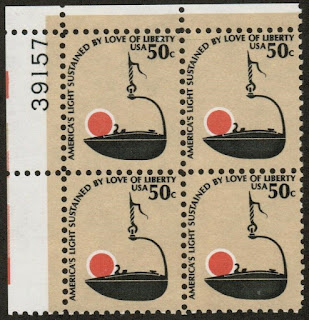1620 – Plymouth Colony: William Bradford and the Mayflower Pilgrims land on what is now known as Plymouth Rock in Plymouth, Massachusetts.
Plymouth Rock is the traditional site of disembarkation of William Bradford and the Mayflower Pilgrims who founded Plymouth Colony in December 1620. The Pilgrims did not refer to Plymouth Rock in any of their writings; the first known written reference to the rock dates to 1715 when it was described in the town boundary records as "a great rock." The first documented claim that Plymouth Rock was the landing place of the Pilgrims was made by Elder Thomas Faunce in 1741, 121 years after the Pilgrims arrived in Plymouth.
From that time to the present, Plymouth Rock has occupied a prominent spot in American tradition and has been interpreted by later generations as a symbol of both the virtues and the flaws of the first English people who colonized New England. In 1774, the rock broke in half during an attempt to haul it to Town Square in Plymouth. The top portion (the fragment now visible) sat in Town Square, was moved to Pilgrim Hall Museum in 1834, and was returned to its original site on the shore of Plymouth Harbor in 1880. Today it is ensconced beneath a granite canopy designed by McKim, Mead & White.
1789 – North Carolina ratifies the United States Constitution and is admitted as the 12th U.S. state.
1933 Died: Knud Rasmussen, Greenlandic anthropologist and explorer (b. 1879)
Knud Johan Victor Rasmussen (7 June 1879 – 21 December 1933) was a Greenlandic–Danish polar explorer and anthropologist. He has been called the "father of Eskimology" and was the first European to cross the Northwest Passage via dog sled. He remains well known in Greenland, Denmark and among Canadian Inuit.
He went on his first expedition in 1902–1904, known as The Danish Literary Expedition, with Jørgen Brønlund, Harald Moltke and Ludvig Mylius-Erichsen, to examine Inuit culture. After returning home he went on a lecture circuit and wrote The People of the Polar North (1908), a combination travel journal and scholarly account of Inuit folklore. In 1908, he married Dagmar Andersen.
In 1910, Rasmussen and friend Peter Freuchen established the Thule Trading Station at Cape York (Qaanaaq), Greenland, as a trading base. The name Thule was chosen because it was the most northerly trading post in the world, literally the "Ultima Thule". Thule Trading Station became the home base for a series of seven expeditions, known as the Thule Expeditions, between 1912 and 1933.
The First Thule Expedition (1912, Rasmussen and Freuchen) aimed to test Robert Peary's claim that a channel divided Peary Land from Greenland. They proved this was not the case in a remarkable 1,000 kilometres (620 mi) journey across the inland ice that almost killed them. Clements Markham, president of the Royal Geographical Society, called the journey the "finest ever performed by dogs." Freuchen wrote personal accounts of this journey (and others) in Vagrant Viking (1953) and I Sailed with Rasmussen (1958).
The Second Thule Expedition (1916–1918) was larger with a team of seven men, which set out to map a little-known area of Greenland's north coast. This journey was documented in Rasmussen's account Greenland by the Polar Sea (1921). The trip was beset with two fatalities, the only in Rasmussen's career, namely Thorild Wulff and Hendrik Olsen. The Third Thule Expedition (1919) was depot-laying for Roald Amundsen's polar drift in Maud. The Fourth Thule Expedition (1919–1920) was in east Greenland where Rasmussen spent several months collecting ethnographic data near Angmagssalik.
Rasmussen's "greatest achievement" was the massive Fifth Thule Expedition (1921–1924) which was designed to "attack the great primary problem of the origin of the Eskimo race." A ten volume account (The Fifth Thule Expedition 1921–1924 (1946)) of ethnographic, archaeological and biological data was collected, and many artifacts are still on display in museums in Denmark. The team of seven first went to eastern Arctic Canada where they began collecting specimens, taking interviews (including the shaman Aua, who told him of Uvavnuk), and excavating sites.
Rasmussen left the team and traveled for 16 months with two Inuit hunters by dog sled across North America to Nome, Alaska – he tried to continue to Russia but his visa was refused. He was the first European to cross the Northwest Passage via dog sled. His journey is recounted in Across Arctic America (1927), considered today a classic of polar expedition literature. This trip has also been called the "Great Sled Journey" and was dramatized in the Canadian film The Journals of Knud Rasmussen (2006).
For the next seven years Rasmussen traveled between Greenland and Denmark giving lectures and writing. In 1931, he went on the Sixth Thule Expedition, designed to consolidate Denmark's claim on a portion of eastern Greenland that was contested by Norway.
The Seventh Thule Expedition (1933) was meant to continue the work of the sixth, but Rasmussen contracted pneumonia after an episode of food poisoning attributed to eating kiviaq, dying a few weeks later in Copenhagen at the age of 54.
US stamps commemorating the Pilgrims landing
1789 – North Carolina ratifies the United States Constitution and is admitted as the 12th U.S. state.
North Carolina is a state in the southeastern region of the United States. North Carolina is the 28th largest and 9th-most populous of the 50 United States. It is bordered by Virginia to the north, the Atlantic Ocean to the east, Georgia and South Carolina to the south, and Tennessee to the west. Raleigh is the state's capital and Charlotte is its largest city. The Charlotte metropolitan area, with an estimated population of 2,569,213 in 2018, is the most-populous metropolitan area in North Carolina, the 23rd-most populous in the United States, and the largest banking center in the nation after New York City.[8] The Raleigh metropolitan area is the second-largest metropolitan area in the state, with an estimated population of 1,362,540 in 2018, and is home to the largest research park in the United States, Research Triangle Park.
North Carolina was established as a royal colony in 1729 and is one of the original Thirteen Colonies. North Carolina is named in honor of King Charles I of England who first formed the English colony, Carolus being Latin for "Charles". On November 21, 1789, North Carolina became the 12th state to ratify the United States Constitution.
US stamp issued to commemorate North Carolina's ratification of the US constitution
1933 Died: Knud Rasmussen, Greenlandic anthropologist and explorer (b. 1879)
Knud Johan Victor Rasmussen (7 June 1879 – 21 December 1933) was a Greenlandic–Danish polar explorer and anthropologist. He has been called the "father of Eskimology" and was the first European to cross the Northwest Passage via dog sled. He remains well known in Greenland, Denmark and among Canadian Inuit.
He went on his first expedition in 1902–1904, known as The Danish Literary Expedition, with Jørgen Brønlund, Harald Moltke and Ludvig Mylius-Erichsen, to examine Inuit culture. After returning home he went on a lecture circuit and wrote The People of the Polar North (1908), a combination travel journal and scholarly account of Inuit folklore. In 1908, he married Dagmar Andersen.
In 1910, Rasmussen and friend Peter Freuchen established the Thule Trading Station at Cape York (Qaanaaq), Greenland, as a trading base. The name Thule was chosen because it was the most northerly trading post in the world, literally the "Ultima Thule". Thule Trading Station became the home base for a series of seven expeditions, known as the Thule Expeditions, between 1912 and 1933.
The First Thule Expedition (1912, Rasmussen and Freuchen) aimed to test Robert Peary's claim that a channel divided Peary Land from Greenland. They proved this was not the case in a remarkable 1,000 kilometres (620 mi) journey across the inland ice that almost killed them. Clements Markham, president of the Royal Geographical Society, called the journey the "finest ever performed by dogs." Freuchen wrote personal accounts of this journey (and others) in Vagrant Viking (1953) and I Sailed with Rasmussen (1958).
The Second Thule Expedition (1916–1918) was larger with a team of seven men, which set out to map a little-known area of Greenland's north coast. This journey was documented in Rasmussen's account Greenland by the Polar Sea (1921). The trip was beset with two fatalities, the only in Rasmussen's career, namely Thorild Wulff and Hendrik Olsen. The Third Thule Expedition (1919) was depot-laying for Roald Amundsen's polar drift in Maud. The Fourth Thule Expedition (1919–1920) was in east Greenland where Rasmussen spent several months collecting ethnographic data near Angmagssalik.
Rasmussen's "greatest achievement" was the massive Fifth Thule Expedition (1921–1924) which was designed to "attack the great primary problem of the origin of the Eskimo race." A ten volume account (The Fifth Thule Expedition 1921–1924 (1946)) of ethnographic, archaeological and biological data was collected, and many artifacts are still on display in museums in Denmark. The team of seven first went to eastern Arctic Canada where they began collecting specimens, taking interviews (including the shaman Aua, who told him of Uvavnuk), and excavating sites.
Rasmussen left the team and traveled for 16 months with two Inuit hunters by dog sled across North America to Nome, Alaska – he tried to continue to Russia but his visa was refused. He was the first European to cross the Northwest Passage via dog sled. His journey is recounted in Across Arctic America (1927), considered today a classic of polar expedition literature. This trip has also been called the "Great Sled Journey" and was dramatized in the Canadian film The Journals of Knud Rasmussen (2006).
For the next seven years Rasmussen traveled between Greenland and Denmark giving lectures and writing. In 1931, he went on the Sixth Thule Expedition, designed to consolidate Denmark's claim on a portion of eastern Greenland that was contested by Norway.
The Seventh Thule Expedition (1933) was meant to continue the work of the sixth, but Rasmussen contracted pneumonia after an episode of food poisoning attributed to eating kiviaq, dying a few weeks later in Copenhagen at the age of 54.







No comments:
Post a Comment